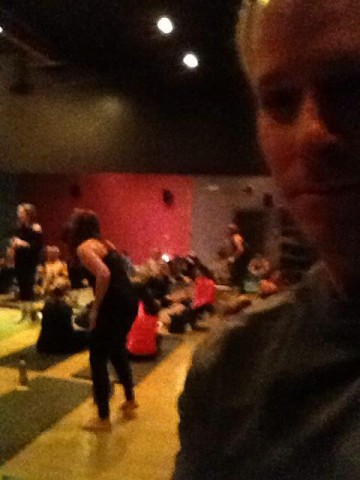Recently I attempted to initiate a dialogue on the topic of whether or not yoga is good for athletes. Because a number of athletes use it as part of their training.But is it something that benefits them? Is it a need to have or a nice to have?The last post was meant to examine yoga as to how it meets the needs of athletes. And I wanted to focus primarily on what 99.9% of athletes that come through our door are asking for which is to get stronger, to get faster and to become fitter.Yet in the comments section on the previous post the proponents of yoga didn't address those questions. Instead we heard about many of the other benefits of yoga, some of which I agree with, a listing of the various types of yoga as well as offerings as to new spellings of words. The urban dictionary will be calling. [caption id="attachment_3014" align="aligncenter" width="480"] Just before my first yoga class. What I'd like to do with this post is see if there is agreement as to what develops strength, power and fitness? I will also share what my first experience with yoga was like. Lastly, I am going to pose another question regarding yoga not so much from the athletic development perspective but in a more general sense. So rather than hide in my squat racks with weight vests on like Salman Rushdie I want to continue the dialogue and get some more feedback. Here we go. If we are to discuss increasing strength then there needs to be consideration to resistance. There are a number of ways to apply resistance to a system. It can be variable such as bands and tubing or constant such as body or free-weight. We can move the resistance through or against the...
For the Best Fitness Results You Need to Load to Unload
- Chris Collins
- Training
- 1670 Hits
- 12 Comments
-
Movement is an interesting thing. In some ways it comes naturally to us. Think of a baby on its back wiggling the arms and legs. Eventually with enough effort and momentum the baby will be able get a leg across the body, rotate the hips and flip onto their stomach.But what starts out as an inquisitive exploration of our surroundings can lead to many great abilities in sports and performance. As young kids we are fearless and will do and try just about anything to seek a thrill and have fun.As we get older life gets a little busier and we get a little wiser about the downside of being hell-bent for speed and thrills. Basically all we have to do is experience one injury to curb our thirst for extreme movement and velocity.But that doesn't have to mean sport and movement stops all together. In fact it can't and is essential for our vitality.So we must find that balance between fearlessly attacking a sport or activity with reckless abandom and taking ourselves 'out of the game' completely.And this balance comes with being able to load and unload the forces we experience with movement. And we do this most effectively when we have neuromuscular efficiency (NE). This basically means we get the right muscles to fire, at the right time and in the right plane.Unfortunately success in sport is not as simple as simply having NE because we still need to develop the fitness, strength and power of the relevant muscles. Add to that the demands for reading and reacting to an opponent as well as changing environmental conditions and you can quickly appreciate how skilled high level athletes really are.In order to develop some of the athletic abilities of the pros look to be able to efficiently load and unload the body....
